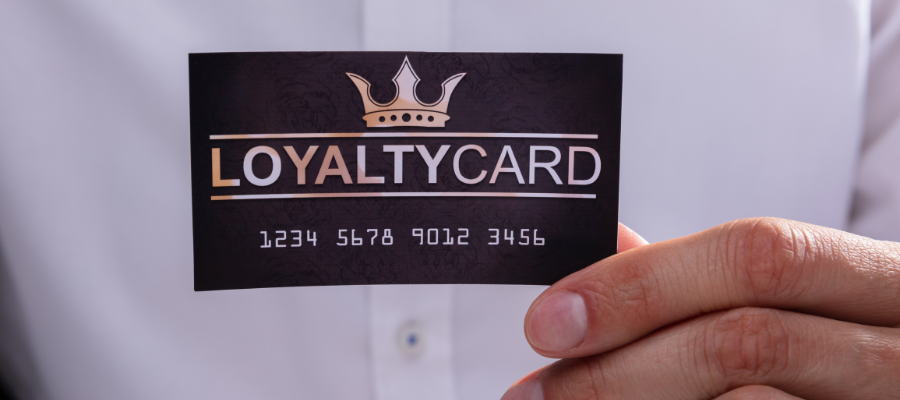Growing supporter loyalty doesn’t happen by accident
Our friend Roger Lawson of About Loyalty continues his recent series with a piece explaining why investing in donor loyalty reaps amazing rewards.
- Written by
- Roger Lawson
- Added
- September 16, 2021

As we continue this series on exploring the science of supporter loyalty, we should reflect on what we’ve covered so far. The main points are that loyalty is emotional – it’s the passion someone feels for your cause and your charity; loyalty is born of commitment, satisfaction, and trust; and it’s important to measure it.
It’s crucial to understand these concepts if you are to grow your supporter loyalty. But when I look across the charities I support and work with, I’m also struck by another observation – the charities that are successful are those that work at it.
Growing loyalty doesn’t just happen.
I started this series talking about the loyalty many of us feel towards the football team that we support (and I spoke of my love of Reading Football Club). This loyalty should be unshakeable, but around the same time we saw that the love supporters feel towards their teams can be destroyed when six British clubs tried to break away and join the proposed European Super-League. It doesn’t matter if you follow football or not, the important point here is that loyalty can be broken.
And using another analogy, much like a strong and loving marriage can fizzle out if either person stops trying, it’s a valuable reminder that supporter loyalty must be invested in. It doesn’t just happen or last long-term by accident, it requires effort from both sides.

While I believe the concept of loyalty being an investment is often understood, this falls by the wayside when the necessary elements, and activities that make it are seen, are viewed as costs.
- Your supporter care team, for example, is likely to be seen as a ‘cost centre’ in your budgets. But run the numbers and I can pretty much guarantee that the supporters contacting your team are among your most loyal and most valuable. What an opportunity every contact is.
- Admin is always seen as a cost. Yet a great admin system gives you the opportunity to surprise and delight your donors with a fast, personal, and inspiring thank you when they give, which will pay back in future loyalty and giving.
- Newsletters are often seen as an organisational mouthpiece with a cost associated with them, but good newsletters are exciting opportunities that inspire supporters and tell them what a difference they have made in the world.
So, it’s time to really invest in supporter loyalty. And there are three types of investment that matter.
1. Whenever we think of investment we think of money.
How much should we be investing in growing supporter loyalty? There’s no simple answer to this, but there is one key statistic that we can use to provide a business case for investment.
When we research into a charity’s supporters we ask about commitment, satisfaction, and trust, and we give each one a loyalty score (which runs from one to seven). Monitoring activity to look at the impact this loyalty score has on future giving we have seen that on average, a one-point increase in loyalty is predictive of over five per cent greater retention the following year.
So, in a database of 10,000 supporters, a five per cent increase in retention next year will mean 500 more supporters retained. Or, to put it another way, 500 supporters you won’t need to acquire next year.
Now plug in the cost per acquisition you’d need to pay to recruit an extra 500 supporters next year. You’ll have your own figures, but I’m going to use an average of £75. That’s £37,500 you won’t need to spend just to stand still.
What can you do with that £37,500 to inspire those 10,000 donors? For an investment of £3.75 each you could phone nearly all of them. You could send handwritten, personal notes of thanks or your latest news. You could probably employ someone who could go and visit every one of them!
Which would you prefer this time next year – 500 new donors, of whom fewer than 50 per cent will continue giving, or 500 supporters who have deeper loyalty, remained giving, or even increased their gift, because you’ve inspired them to want to? I know which I’d choose.
2. You need to invest your time.
Often the opportunities to grow supporter loyalty don’t cost money, but they do take a little more of your time.
Too often thank you letters are written as an afterthought to the appeal. But there’s been a lot written on SOFII (here, and here, and here) that shows how just a little time and thought can transform these into the most incredible experiences for your most important supporters.
And when someone contacts your supporter care team, take a few moments to ask how they are and to really listen to what they have to say. Right now, this has never been so important. Just a couple of minutes extra can make such a difference to how someone is feeling.
3. You need to invest your creativity.
Provide opportunities to create a moment of magic for your supporters. A few years ago, I was lucky to work with NSPCC’s stewardship directorate. One of the things they did was to remove ‘newsletter’ from their budget spreadsheet four times a year and replace it with ‘magic’. Every quarter, rather than a brief to create a newsletter, the team received a brief that asked us to create a ‘moment of magic’ for our supporters.
What we created varied every time. Sometimes it was big, exciting pieces that gained lots of coverage. But at other times it was more simple. I remember a Childline volunteer receiving a letter from someone they had helped by being there. The letter simply said thank you. Copying it and sending it to donors with a personal note was the simplest action we could do, but it had more impact than any newsletter could have had.
It’s important. But getting creative can also be a lot of fun!
I hope you’re enjoying this series. I hope you’ve learnt something. But most of all I hope you’ve been inspired to go and build your supporters’ loyalty.

















